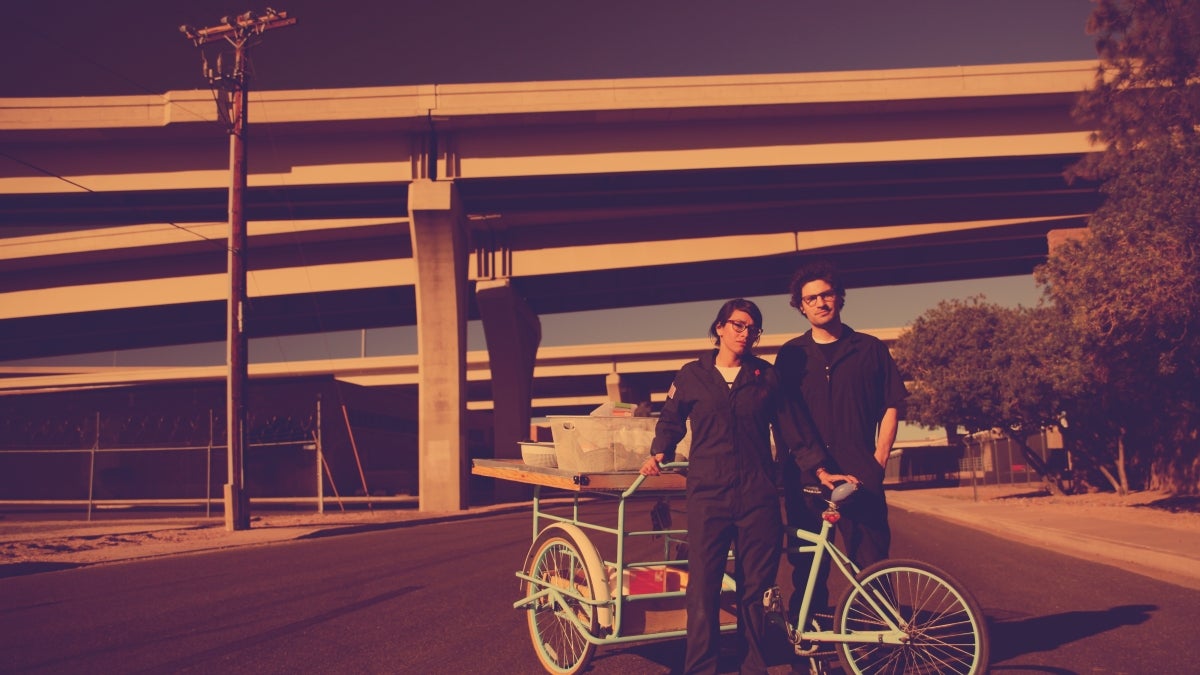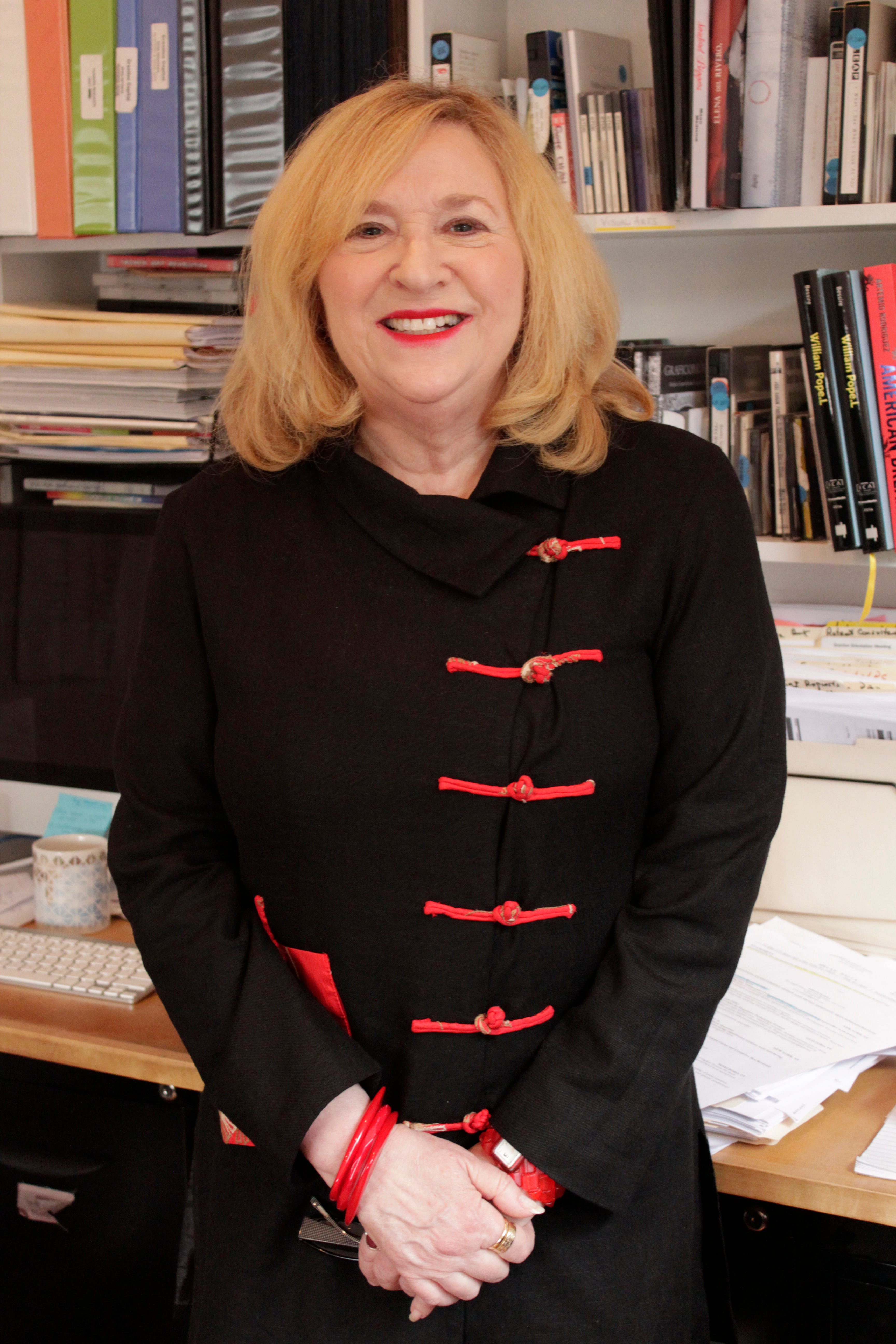National arts leader Ruby Lerner brings innovative approach to ASU

ASU alums April Bojorquez and Matt Garcia credit Lerner and Creative Capital with helping them deepen and extend their research.
Ruby Lerner, founder of Creative Capital, is bringing her revolutionary thinking to Arizona State University in her new role as the Herberger Institute for Design and the Arts’ inaugural policy fellow. According to Herberger Institute Dean Steven J. Tepper, Lerner will be advancing ideas related to support for faculty, new enterprise models for the institute and engaging professional artists in the community.
“Ruby is helping us figure out how ASU can be the national laboratory for testing and scaling innovation in arts and culture, including how the methods and principles that she put in play at Creative Capital can be applied in a university setting to help our students and faculty,” Tepper said. “She is the perfect person to help us design solutions in an environment where resources may not always align with ambitions. She knows how to find partners and she thinks like a venture capitalist, something we need not only across the arts field, but also within universities.”
As president and executive director of the groundbreaking arts nonprofit Creative Capital, Lerner spent almost two decades mentoring some of the most adventurous and forward-thinking artists in the U.S. Designed and led by Lerner, with support from The Andy Warhol Foundation for the Visual Arts, Creative Capital reinvented cultural philanthropy by applying the venture capital model that has helped entrepreneurs thrive.
“It’s really a success methodology,” Lerner explained. “Money alone doesn’t do the job. You need advice, you need skills building. Get artists the help they need. Get them the people they need. That was such a big revelation to me.”
The approach is very different from the standard, “Here’s some money and good luck,” as Lerner put it. And it has been wildly successful. Included on Creative Capital’s roster of grantees are art stars like Theaster Gates, whom the Wall Street Journal named 2012’s innovator of the year for his work transforming a neglected neighborhood on Chicago’s South Side into a dynamic cultural center. Artists who’ve benefited from Lerner’s vision and support use words like “revolutionary,” “authentic,” “transformative” and “life-changing.”
Lerner spent two weeks at ASU in February meeting with students and faculty, attending classes and workshops, and collecting information.
Ruby Lerner
“I’m absorbing,” she said. “I’m trying to see what’s going on and where there might be gaps that could be addressed.” She’s excited to return in the fall for another two weeks to put things in motion.
“This is such a dynamic place right now. Honestly just to get to be here is such a privilege and to get to learn more about what people are doing. I’m as excited about what I’m going to learn as I am about how I might advise.”
Lerner notes that work at ASU around sustainability and the environment is part of what makes it “one of the most exciting campuses in this country right now.” A favorite recent Creative Capital project of hers is Desert ArtLAB’s the Desertification Cookbook, which received a grant last year. Desert ArtLAB is the brainchild of April Bojorquez and Matt Garcia, both ASU alums. (Bojorquez received a BA in anthropology and a certificate in Latin American Studies from the College of Liberal Arts and Studies in 2003, a certificate in Museum Studies from the Herberger Institute in 2010, and an MA in anthropology in 2011; Garcia received a BA in journalism in 2004 from Cronkite and an MFA in intermedia from the Herberger Institute’s School of Art in 2012.)
In addition to Desert ArtLAB, Creative Capital has supported several artists with ties to the Herberger Institute for Design and the Arts, including painter Beverly McIver, fiber artist Mark Newport, Grisha Coleman (associate professor in the Herberger Institute’s School of Arts, Media and Engineering), Gregory Sale (assistant professor in the School of Art) and the indigenous arts collective Postcommodity.
Now based in Colorado, Bojorquez and Garcia credit Creative Capital’s recognition with helping them deepen and extend their research.
“To get that kind of support has been incredible,” Garcia says. “Creative Capital thinks about the lives artists have to live to make the work they make. How do artists have holistic stability and success? It’s not just your art practice. They really do believe in your life, as people. As artists, we have these big dreams we sacrifice so much for. So when you come across someone like Ruby who tells you it’s possible and you’re on the right path, it’s rare. There’s an optimism, but there’s action to back it up. It’s really special that ASU is able to have a scholar and thinker like her. It speaks highly of ASU’s vision and direction.”
Garcia says he knows he sounds like a cheerleader for Creative Capital, but, he said, that’s because of the results. “You see the artists they’ve supported out there and the network of relationships they’ve created.”
If artists seem to believe in Lerner, that may be in large part because she believes so fiercely in them, and in the power of art.
Asked why she feels strongly about art and the need to support artists, she cites a quote from Joshua Cooper Ramo in his book “The Age of the Unthinkable,” about our country’s foreign policy challenges.
Ramo writes that “there are forces for change at work that are invisible using old ways of seeing.” He goes on to say that the greatest historical disasters occurred because so few people at the time either recognized or understood the shift. “Artists,” he writes, “with their tuned instincts for the new, often do.”
Lerner says that if Ramo is right, and she believes he is, that makes the support for, and validation and recognition of, contemporary artists – all the things Lerner has worked to ensure – not a luxury, but a cultural necessity.
Read Lerner’s vision for the art school of the future: http://creativz.us/2016/04/07/art-school-future/.
More Arts, humanities and education

Upcoming exhibition brings experimental art and more to the West Valley campus
Ask Tra Bouscaren how he got into art and his answer is simple.“Art saved my life when I was 19,” he says. “I was in a…

ASU professor, alum named Yamaha '40 Under 40' outstanding music educators
A music career conference that connects college students with such industry leaders as Timbaland. A K–12 program that…

ASU's Poitier Film School to host master classes, screening series with visionary filmmakers
Rodrigo Reyes, the acclaimed Mexican American filmmaker and Guggenheim Fellow whose 2022 documentary “Sansón and Me” won the Best…


